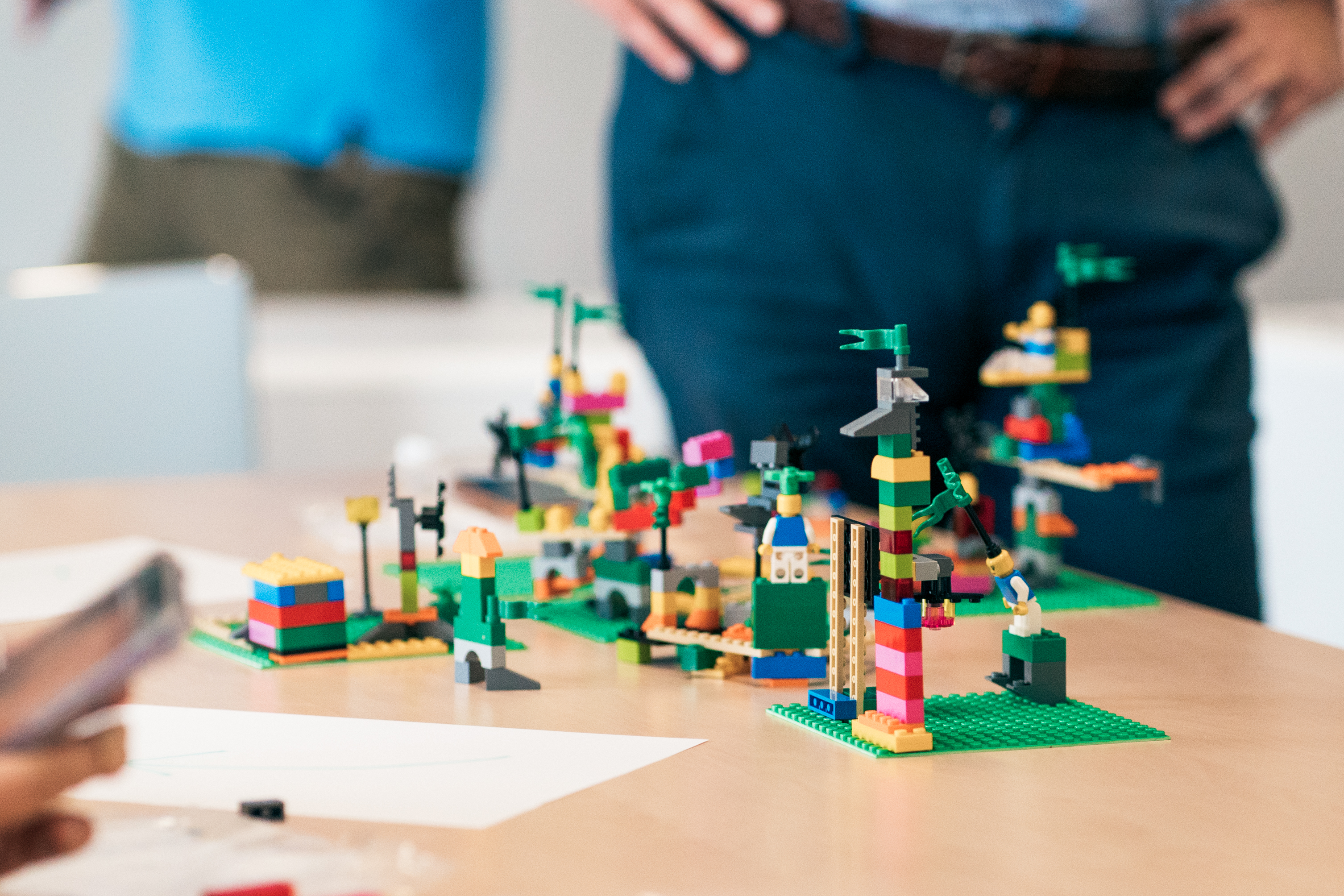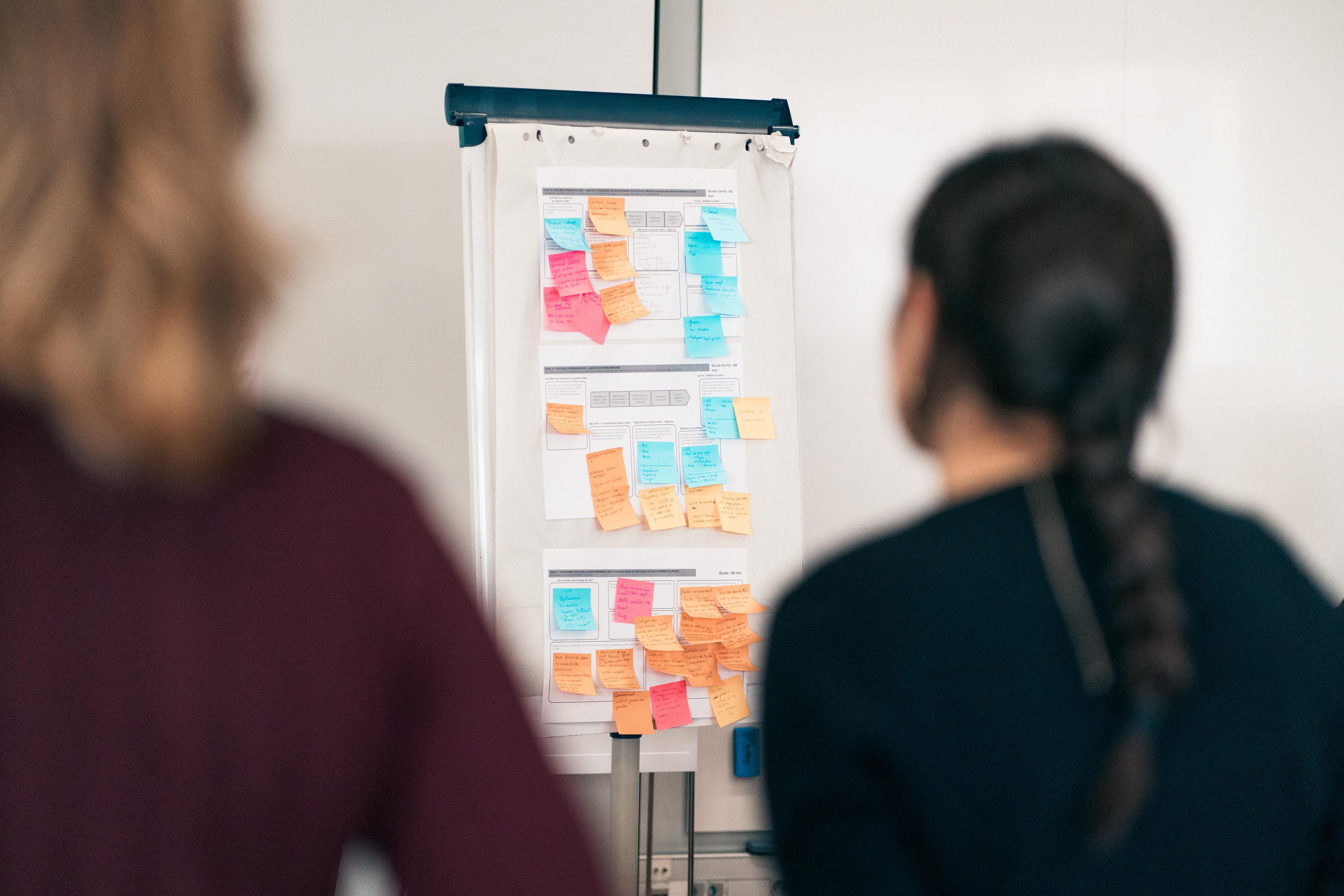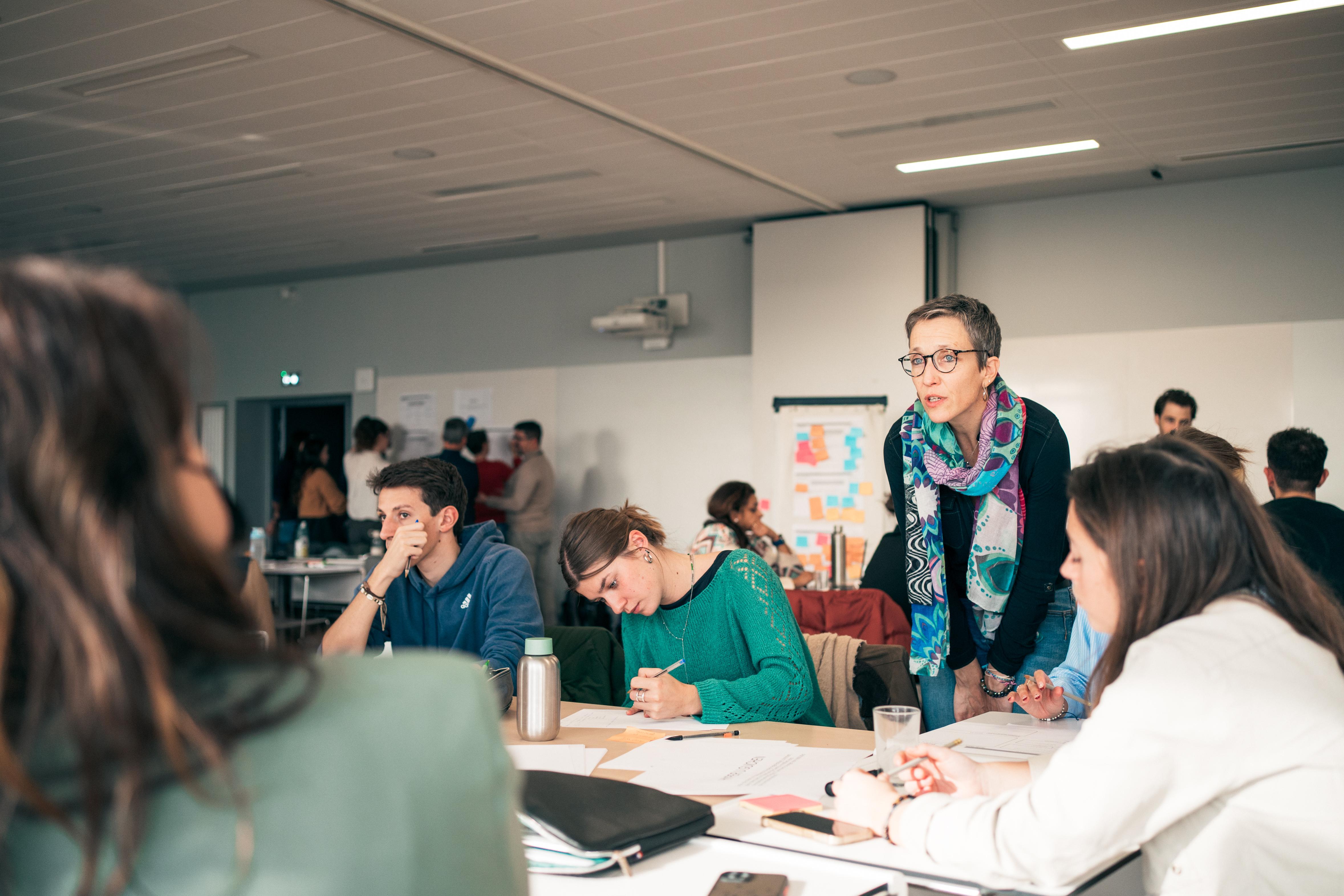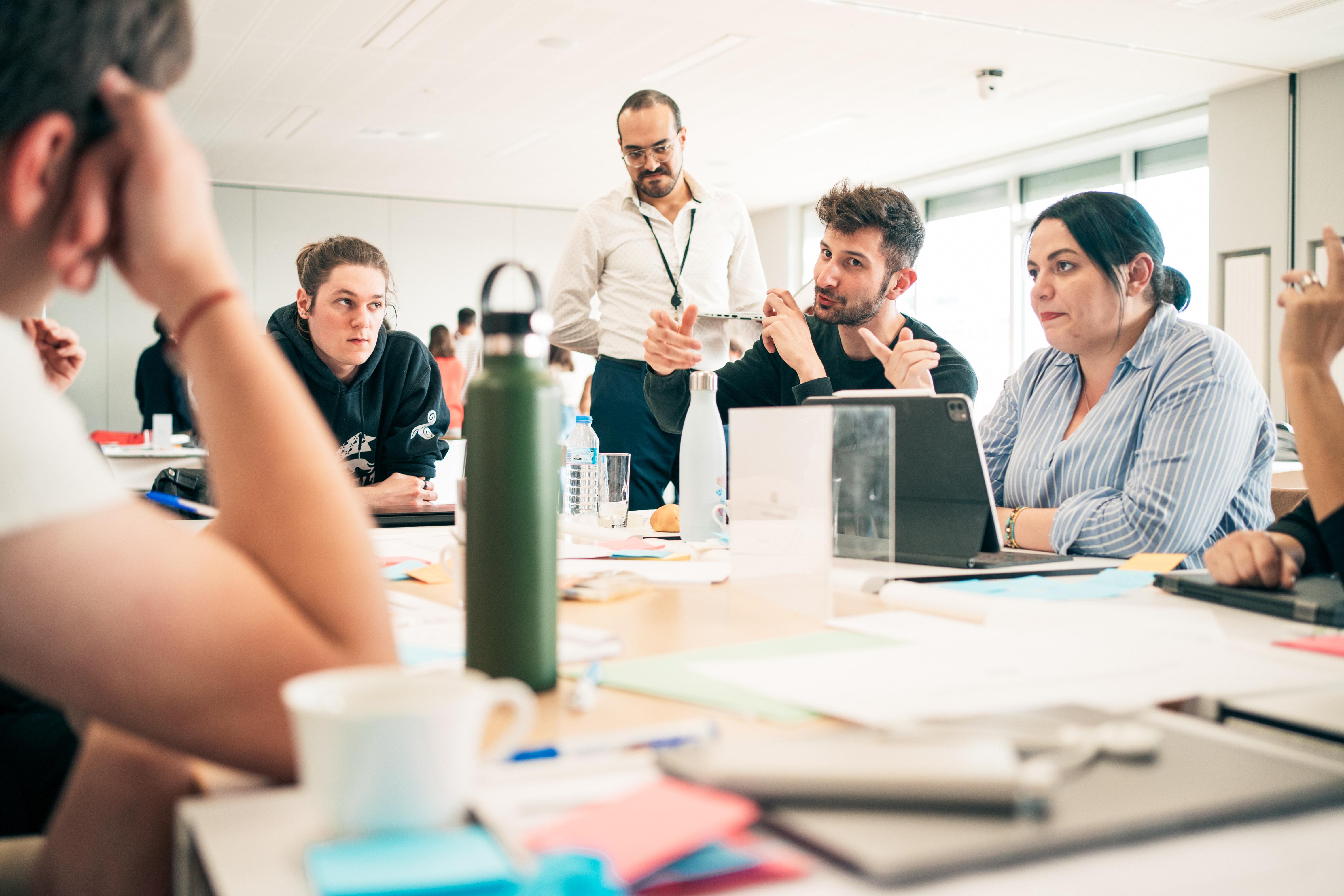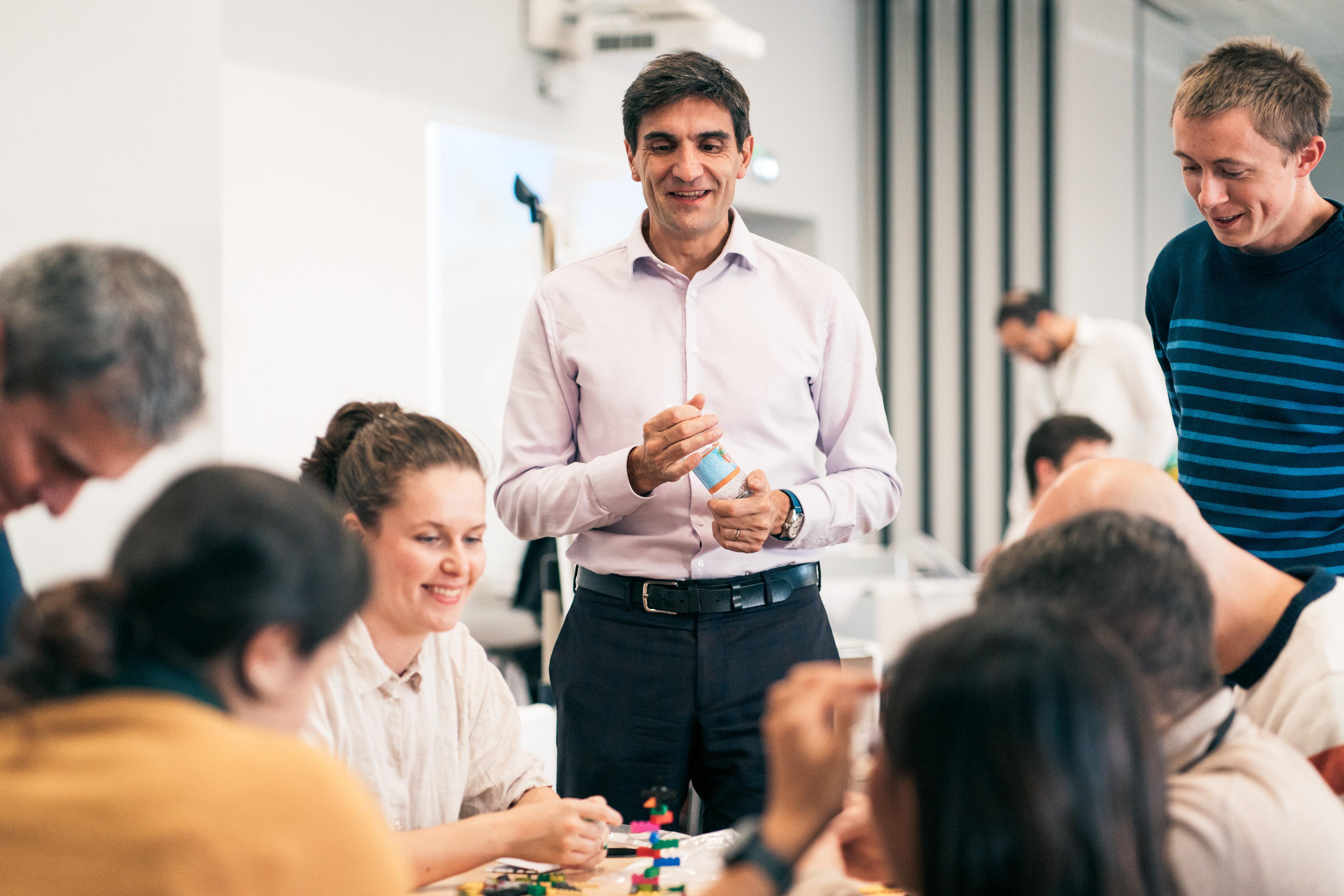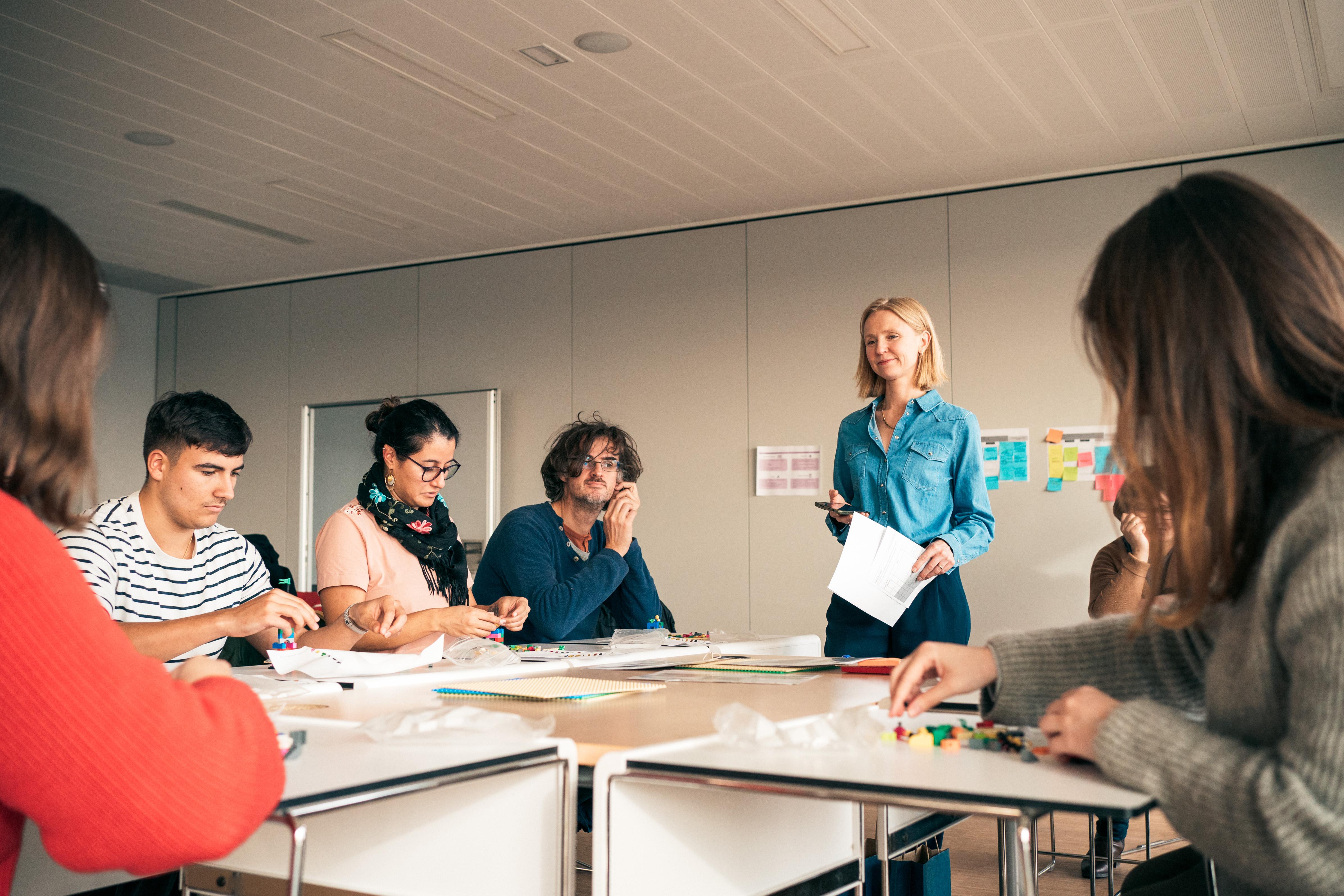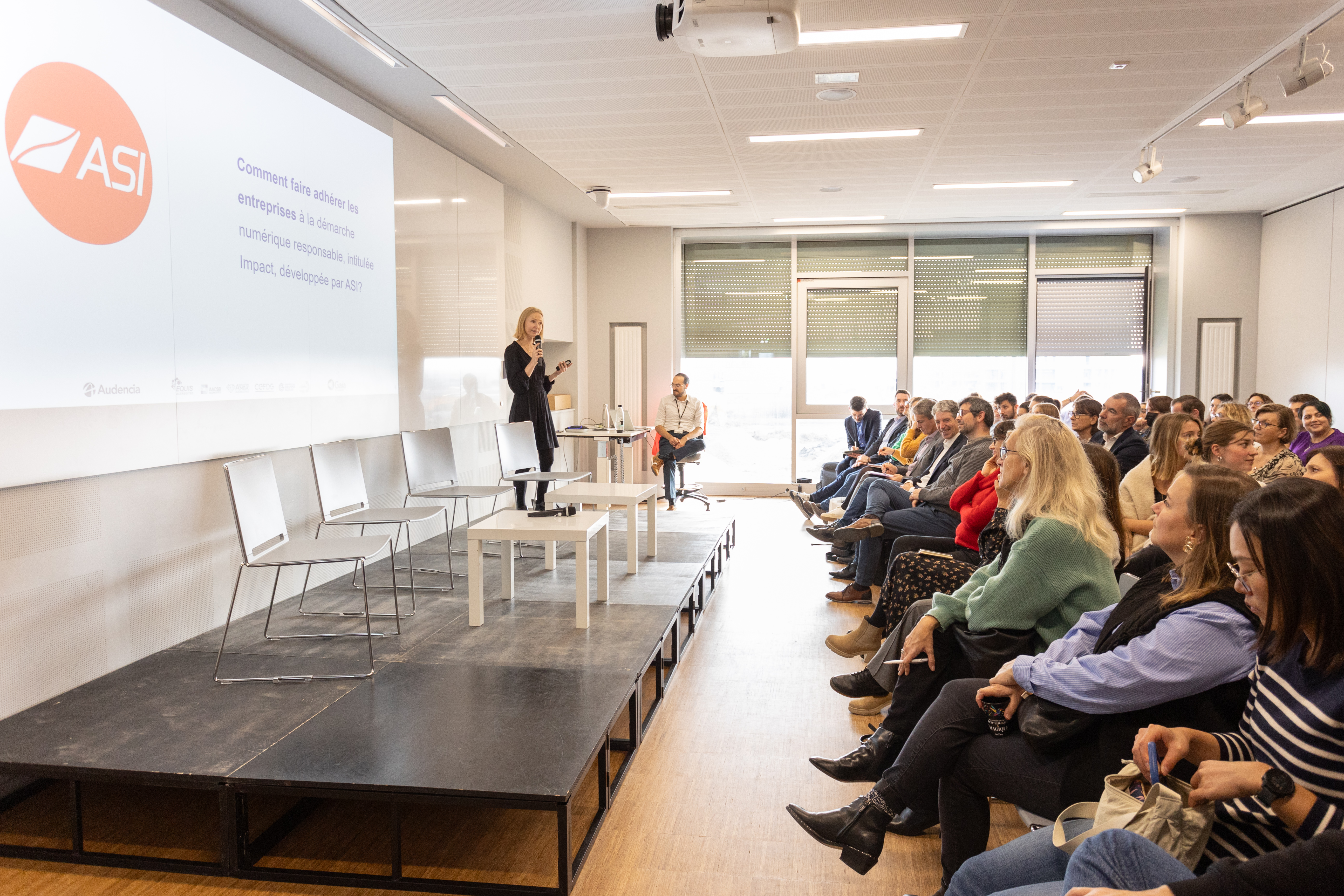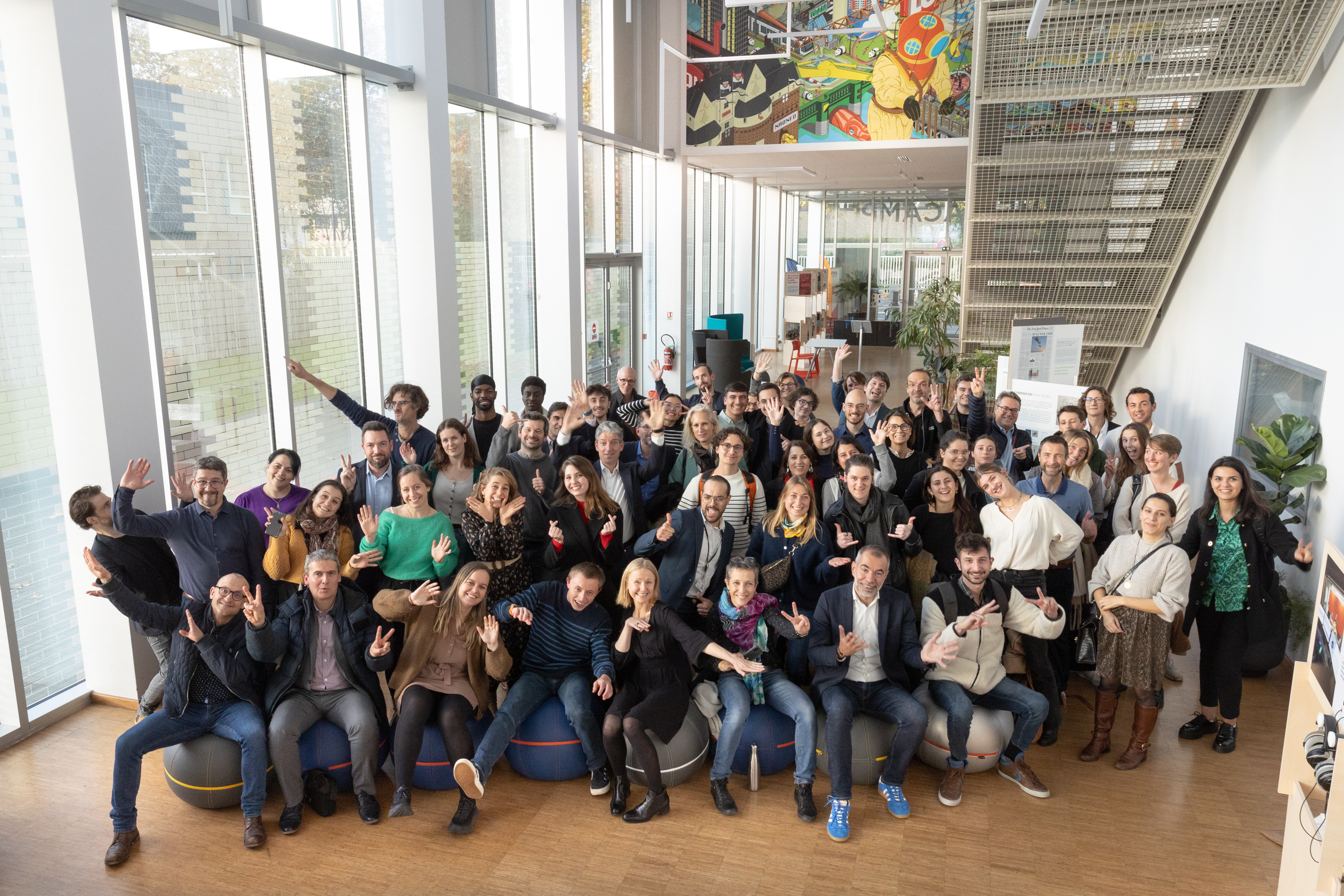- Home
- >
- FACILITATING AND EVALUATING STUDENTS
- >
- Inspiring events
- >
- Gaïa Hackathon of the transition in the territory
Overall hackathon design
As described in this article following the GAIA transition hackathon took place on 13, 14 and 15 November at Mediacampus with companies Hyper U Guichen, ASI, GRDF and Enedis.
The groups of participants were composed of students from the MS Acteur pour la Transition Écologique and the MSc Sustainable Business Impact, as well as collaborators from each company involved. The aim was to create groups with multiple skills: students, external to the subject, bring a new and creative look on a problem that they only discover at a moment t. Employees, can bring business expertise or knowledge of the inner processes of their structure and complete the thinking process efficiently.
The methodology for developing the hackathon was largely based on that of the double diamond, a series of design thinking workshops in teams supervised by a facilitator.
Pedagogical design
There were several challenges, at the pedagogical level :
- The first step was to get the groups together very quickly and trust each other to work together.
- The hackathon agenda was very short to be able to understand in depth the problem.
- The 4 companies had to progress at the same time through the overall pedagogical process, despite different problematics.
As an introduction to the hackathon, the sponsor of each company exposed the problem to each of its groups and then thre were discussions and a Q&A session (with the QQOQCP method as a guideline).
For the design thinking part, the choice was made to create customized activity templates for each company allowing the following intellectual journey for groups :
Exploratory part of the double diamond
- Analyse the value chain of each company, or the process impacted by the problematic.
- Analyse how the ecological and social transition impacts this value chain and process, where are the levers and the brakes.
- Analyse the role of stakeholders in implementing this ecological transition.
- Focus on the client stakeholder and analyse its level of acceptability.
Then a transition phase was to land and list the problems by prioritizing them.
Part solutions / prototyping
The LEGO SERIOUS PLAY workshop allowed, according to the protocol:
- To initially make participants aware of the notion of "metaphor" related to LEGO: a brick can represent an idea, a concept, a part of the company... everything can be materialised with LEGO.
- To lead participants in developing individual solutions to problems identified in the morning.
- Put them in perspective collectively, connect them and tell their story.
A crash test was done at the end of the first day with the sponsor, by telling the story built with the LEGO, then an improvement session following the comments made by the sponsor, at the beginning of the second day.
Pitches
Once the solution was chosen, the whole morning of the second day was dedicated to build a short video teasing the solution, and to build the argumentation for the afternoon pitch.
Conclusion
The participants and more specifically the companies greatly appreciated the flow and sequence of activities, as well as the customization of the activity templates.
From our point of view, the time was a little too short (also noted by the students), for the exploration of the problem and exchanges with the sponsor. The dynamics of the LEGO workshop worked and brought a playful touch to very dense content, but was sometimes differently perceived, depending on the profile of the learners. This type of workshop is indeed a challenge for individuals who are not predominantly visual or kinesthetic!
To conclude, it was an extremely rich experience and a beautiful result for a first edition!




